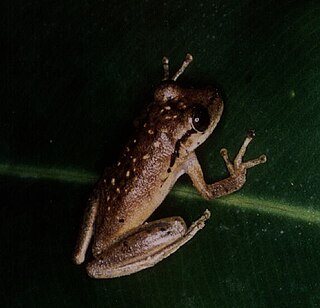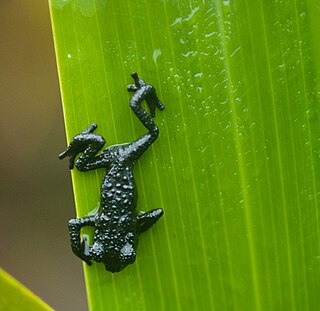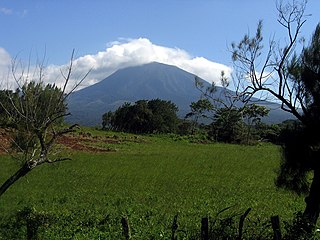
Nature conservation is the moral philosophy and conservation movement focused on protecting species from extinction, maintaining and restoring habitats, enhancing ecosystem services, and protecting biological diversity. A range of values underlie conservation, which can be guided by biocentrism, anthropocentrism, ecocentrism, and sentientism, environmental ideologies that inform ecocultural practices and identities. There has recently been a movement towards evidence-based conservation which calls for greater use of scientific evidence to improve the effectiveness of conservation efforts. As of 2018 15% of land and 7.3% of the oceans were protected. Many environmentalists set a target of protecting 30% of land and marine territory by 2030. In 2021, 16.64% of land and 7.9% of the oceans were protected. The 2022 IPCC report on climate impacts and adaptation, underlines the need to conserve 30% to 50% of the Earth's land, freshwater and ocean areas – echoing the 30% goal of the U.N.'s Convention on Biodiversity. Ultimately, these movements should be further promoted to encourage biodiversity and to conserve a functional ecosystem.

Quercus tomentella, the island oak, island live oak, or Channel Island oak, is an oak in the section Protobalanus. It is native to six islands: five of the Channel Islands of California and Guadalupe Island, part of Baja California.

The spectacled bear, also known as the Andean bear, Andean short-faced bear, or mountain bear and locally as jukumari, ukumari (Quechua) or ukuku, is the last remaining short-faced bear. Its closest relatives are the extinct Florida spectacled bear, and the giant short-faced bears of the Middle to Late Pleistocene age. Spectacled bears are the only surviving species of bear native to South America, and the only surviving member of the subfamily Tremarctinae. The species is classified as Vulnerable by the IUCN because of habitat loss.

Scinax is a genus of frogs in the family Hylidae found in eastern and southern Mexico to Argentina and Uruguay, Trinidad and Tobago, and Saint Lucia. These are small to moderate-sized tree frogs, drably colored. Duellman and Wiens resurrected this genus in 1992. The name originates from the Greek word skinos, meaning quick or nimble.

Trachycephalus is a genus of frogs, commonly known as the casque-headed tree frogs, in the family Hylidae. They are found in Mexico, Central America, and South America. In a recent revision, the seven species of the genus Phrynohyas were included in this genus, and Phrynohyas is now considered a synonym of Trachycephalus. These frogs inhabit the canopies of tropical rainforests, where they breed in tree cavities, and seldom, if ever, descend to the ground.

Pseudacris is a genus of frogs in the family Hylidae found in North America ranging from the Pacific coastline to the Atlantic.

Osteocephalus is a genus of frogs, the slender-legged tree frogs, in the family Hylidae found in the Guianas, the Amazon Basin, Venezuela, Colombia, southeastern Brazil, and north-eastern Argentina. Males are warty, while females are smooth.

Oreophrynella, commonly known as bush toads, is a genus of true toads native to the tepuis of southern Venezuela and adjacent Guyana. The distribution of some species is restricted to a couple of tepuis or even a single tepui, as in the case of Oreophrynella weiassipuensis, which occurs on Wei-Assipu-tepui.

Universidad San Francisco de Quito USFQ is a liberal-arts, private university located in Quito, Ecuador. It was the first totally private self-financed university in Ecuador and the first liberal-arts institution in the Andean region.

Guanacaste Conservation Area is an administrative area which is managed by the Sistema Nacional de Areas de Conservacion (SINAC) of Costa Rica for conservation in the northwestern part of Costa Rica. It contains three national parks, as well as wildlife refuges and other nature reserves. The area contains the Area de Conservación Guanacaste World Heritage Site, which comprises four areas.
A Rocha is an international network of environmental organizations with Christian ethos. A Rocha, which means "the rock" in Portuguese, was founded in Portugal in 1983.
Amazon Conservation Association (ACA) is a 501(c)3 non-profit organization working to conserve the biodiversity of the Amazon basin through the development of new scientific understanding, sustainable resource management and rational land-use policy.

Ricardo Rozzi is a Chilean ecologist and philosopher who is professor at the University of North Texas (UNT) and the Universidad de Magallanes (UMAG). His research combines both disciplines through the study of the interrelations between the ways of knowing and inhabiting the natural world, proposing a dynamic continuous reciprocal feedback between both domains.
Environmental adult education is recognized as a "hybrid outgrowth of the environmental movement and adult education, combining an ecological orientation with a learning paradigm to provide a vigorous educational approach to environmental concerns."

Victor Mercante was an Argentine educator.
The Fundación Proacceso is a non-profit organization that focuses on bridging the digital divide and providing educational tools in low-income areas in Mexico. The Fundación Proacceso’s main project is the RIA, or Learning and Innovation Network, a group of digital inclusion centers that offer access to computers, the Internet and quality education.

The Julimes pupfish is a species of killifish in the family Cyprinodontidae. This pupfish is endemic to El Pandeño, a hot spring in Julimes, Chihuahua, Mexico, and it is adapted to life in water that reaches temperatures as high as 46 °C (114 °F). Consequently, it has been referred to as the "hottest fish in the world", although the closely related Cyprinodon pachycephalus can occur in somewhat warmer waters. Cyprinodon julimes was scientifically described in 2009 as similar to Cyprinodon eximius, but it has a bigger head, nearly one-third of its standard length.

SWAD is a web application to manage the courses, students and teachers of one or more educational institutions.

A climate-friendly school, or eco-school, encourages the education of sustainable developments, especially by reducing the amount of carbon dioxide produced in order to decrease the effects of climate change. The term "climate-friendly school" arose and was promoted by the United Nation's education for sustainable development program (ESD).

Sara Osuna Acedo has a PhD in Philosophy and Education Sciences by Spain’s Universidad Nacional de Educación a Distancia (UNED).
(1) Brian E. Hagenbuch, Nora Bynum, Eleanor Sterling, Anne H. Bower, John A. Cigliano, Barbara J. Abraham, Christine Engels, John F. Mull, John D. Pierce, Michelle L. Zjhra, Jennifer M. Rhode, Stuart R. Ketcham, and Margaret-Ann Mayer. In Press. Evaluating a Multi-Component Assessment Framework for Biodiversity Education. Teaching Issues and Experiments in Ecology, Vol. 6: Research #3 [online].
(2) Brian E. Hagenbuch et al., 2007. Expanding assessment and learning in biodiversity conservation education: A methodological framework. The ESA/SER Joint Meeting (August 5 -- August 10, 2007) http://eco.confex.com/eco/2007/techprogram/P6091.HTM
(4) Matthew I. Palmer et al., 2008. Evaluating learning gains from conservation exercises across multiple institutions. The 93rd ESA Annual Meeting (August 3 -- August 8, 2008) http://eco.confex.com/eco/2008/techprogram/P13967.HTM
(5) M. Mendez, A. Gómez, N. Bynum, R. Medellín, A. L. Porzecanski, E. Sterling. 2007. Conservation Education in Latin America: availability of formal academic programs in conservation biology. Conservation Biology 21 (6): 1399-1403.
(6) Porzecanski, A. L., N. Bynum, J. L. Mena, y R. A. Medellín. 2006. La Red de Educadores y Profesionales de la Conservación (REPC): la implementación de un proyecto internacional de educación superior en México. Contributed chapter in A. Barahona and L. Almeida, eds., Educación para la Conservación. Facultad de Ciencias, Universidad Nacional Autónoma de México, México.
(7) Sterling, E., N. Bynum, J. P. Gibbs, and A. L. Porzecanski. 2005. Construyendo Capacidades para la Conservación de la Biodiversidad en Países Tropicales: La Red de Educadores y Profesionales de la Conservación (REPC). Ambiente y Desarrollo 21 (2): 40-46. http://www.cipma.cl/RAD/2005/2_Sterling.pdf














